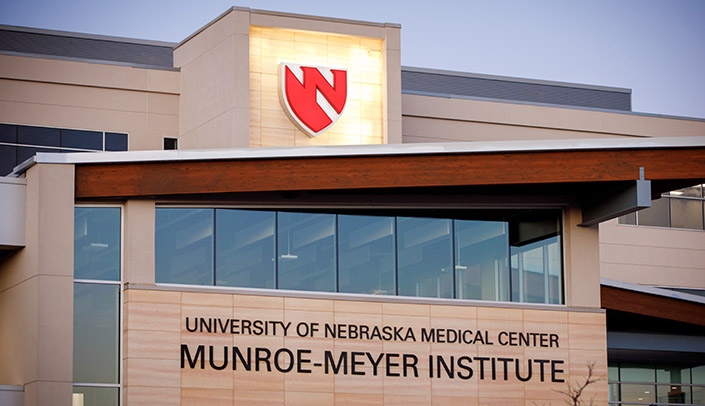This month, the Munroe-Meyer Institute began serving clients at its new home at 6902 Pine St., on the University of Nebraska Omaha Scott Campus.
MMI will move clinical operations from its current building at 444 S. 44th St. to the new location in phases, beginning in early March with clients of the early intervention program. By April 20, all clinical services will be provided at the new building.
The renovated building effectively will double the institute’s current size, to more than 220,000 square feet.
See MMI’s 2020 annual report for a more extensive look at the new building.
“We are thrilled to be in the new space,” said Amy Nordness, PhD, clinical director of MMI. “We’re excited about the new opportunities, the new services we can provide children and families. There also will be new collaboration opportunities — everything about the building is designed to let all the departments work together, explore new programming, enhance collaboration with community organizations and expand our partnerships with families.”
With this new building, MMI is positioned as never before to support the intellectual and developmental disability (IDD) community as it strives for awareness, acceptance and opportunity, said MMI Director Karoly Mirnics, MD, PhD.
“This building will fuel a palpable change in the IDD community, and in the wider community, as well, as we work together toward those goals,” Dr. Mirnics said. “We created a unique building, the most advanced facility in the nation for families impacted by IDD. We wanted to create a new standard in IDD care for families, and we turned to these families — experts in their own right — to discover what they wanted that facility to be.”
The phased movement of the services will ensure that MMI will be able to provide uninterrupted care during the transition to the new building, Dr. Nordness said.
“Everyone is excited to see it in person,” Dr. Nordness said. “We’ve been looking at blueprints for so long, planning on paper, sending emails — to see it in reality, and to have it be set up as we envisioned, is wonderful. And I’ve already heard many clinicians talking about ways they can use the new features of this building to enhance a child’s therapy and development.”
